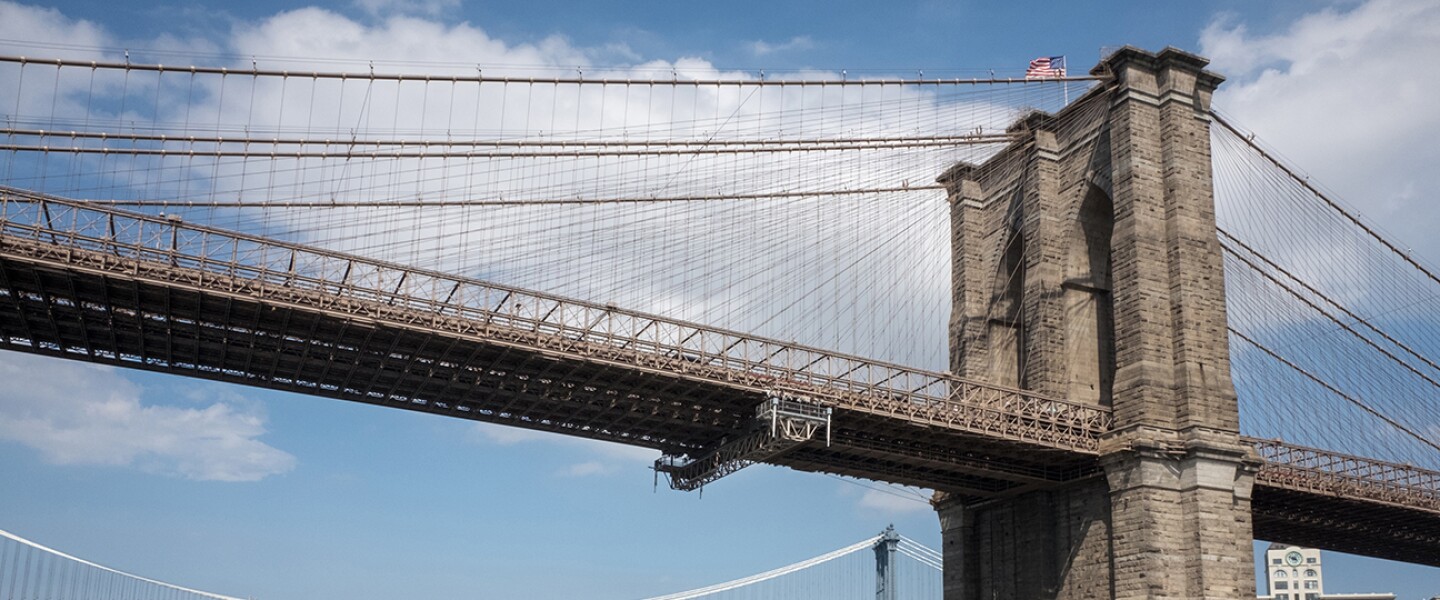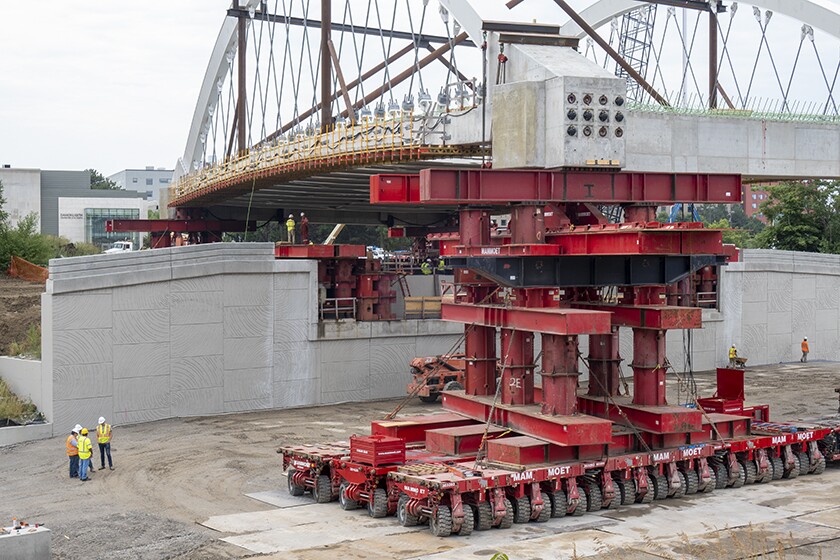
(David Kidd)
Popularly referred to as “the eighth wonder of the world,” the bridge was at the time the largest suspension bridge in the world, featuring a span of 1,595 feet and costing $15 million to construct. Thousands of residents and visitors turned out to watch and participate in the festivities on May 24, 1883, when it opened to the public. Colorful flags and bunting hung from the windows, doors and rooftops of seemingly every house, building and moored boat on both sides of the East River.
With the Seventh Regiment leading the way, President Chester Arthur began his ceremonial walk over the new bridge at about two o’clock. The procession paused at the first great granite tower on New York’s side, where he heard “Hail to the Chief” played four times. Upon arrival at the Brooklyn-side tower, he was treated to the president’s personal anthem another seven times. Cannons boomed, bells rang and steam whistles screamed, on land and from the flotilla of boats gathered below.
Hours of oratory continued throughout the day as thousands of ticket holders streamed across the bridge. An enormous display of fireworks, bigger than anything seen before, filled the night sky. According to the event’s commemorative booklet, “The demonstration was confined to no class or body of the populace. It was a holiday for high and low, rich and poor; it was, in fact, the People's Day.”

(Brooklyn Public Library, Center for Brooklyn History)
Changing but Staying the Same
Engineered and built for the ages, the Brooklyn Bridge has nevertheless undergone several renovations and reconfigurations as traffic needs have changed. Regular trolley service continued over the bridge until 1950 when the tracks were ripped up and replaced with a pair of three-lane roadways. As of 2021, one of the lanes is now dedicated to two-way bike traffic.

(David Kidd)
Building on the Past
Later this year, workers will finish the largest rehabilitation project in the bridge’s history. The granite towers have been strengthened and cleaned. Removing a century of soot and grime has revealed the stone’s original bright gray color. The mortar between each stone has been removed and replaced with material sourced from the same quarries used in the original construction.
Attention has also been paid to the largely unseen rows of soaring stone arches that support the bridge’s vehicle ramps. Brickwork within the arches has been strengthened and restored to its original appearance. Begun 13 years ago, the project also included the creation of an adjacent one-acre park, known as “the Arches.”

(Library of Congress, Prints & Photographs Division, Detroit Publishing Company Collection)

(David Kidd)

(Ed Reed)











